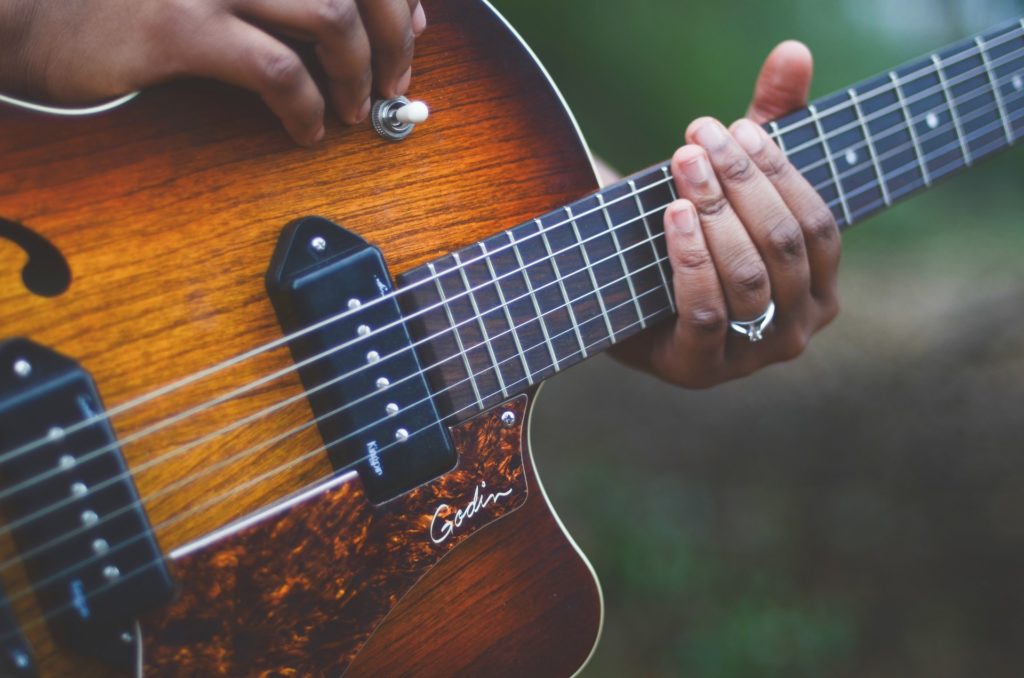Legato is probably my favourite thing about playing guitar. If I can use it for something I will, it avoids issues like inside vs outside picking; makes a lot less work for your picking hand and is very compatible with Hybrid Picking. I also prefer its smooth flowing sound to the separated staccato of alternate picking.
When using legato techniques, the notes should flow together as this is what causes its trademark sound. To achieve this we use techniques like hammer-ons, pull-offs and slides, to ensure that as one note ends the next begins.
We’re going to pick the first note on each string of these exercises. The rest of the notes are played by either a hammer-on, or a pull-off. What we’re discussing here is not the Alan Holdsworth method, which involves exclusively using hammer-ons as he claimed he didn’t like the sound of Pull-offs. I’d recommend getting to grips with the traditional method detailed here before attempting Holdsworth’s variant.
What you’re looking for here is clarity, not speed. Go slowly and concentrate on making sure each note is the same volume as the last.
Example 1
Example 2
We’re going to expand the technique by looking at a scale sequence, again picking only the first note on each string. This sequence features a change of fingering and position shifting and so will require more concentration than example 1. Remember to start out slowly and make sure your notes are evenly spaced.

Example 3
Here we’re going to add a slide to keep the line moving a little further. I’ve always included slides in my legato lexicon as they allow different note groupings to remain connected which means you can keep your smooth flowing sound. A great player to check out for more on this idea is Mark Holcomb of Periphery/Haunted Shores.

Example 4
Finally we’re going to see how legato can fit into rhythm playing to provide a little bit of extra texture. This idea was inspired by Thomas Erak from The Fall of Troy who frequently uses legato in his riffing to help create their erratic sound.
Take these ideas and practice them one by one. Don’t be tempted to rush ahead unless you already have some experience with Legato playing. I’ve left some examples at the end of this lesson to show some excellent Legato players and the way they individually use the technique. Enjoy!
Mark Holcomb
While not a Lead guitar player in most senses, Holcomb uses legato in a large amount of his riffing and it gives him a distinct flowing sound that makes it easy to tell when he’s written a riff for periphery rather than Misha or Jake.
Joe Satriani
I couldn’t go through an article on Legato without mentioning Satch, his legato playing has inspired so many players over the years, check out pretty much anything from his back catalogue and you won’t be disappointed for Legato content.
Angel Vivaldi
An interesting note on this is that Angel Vivaldi doesn’t sweep up, any time you see him performing sweeps his ‘up sweeps’ are in fact pure hammer-ons as he found it difficult to time his upstrokes with traditional sweep picking.


